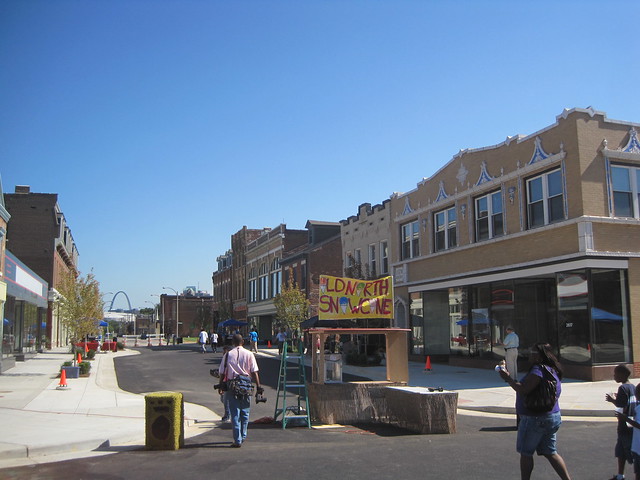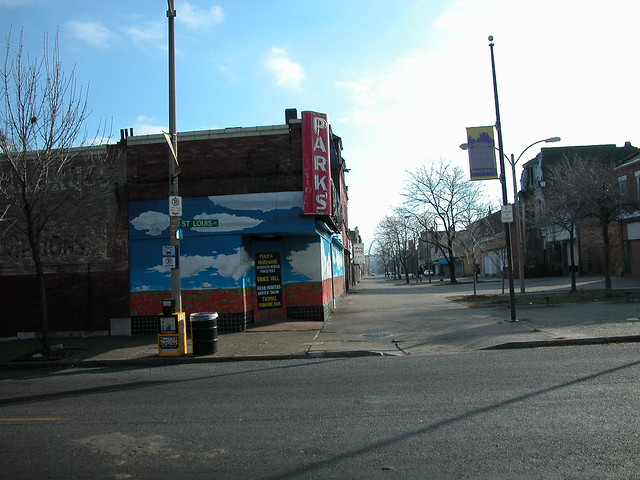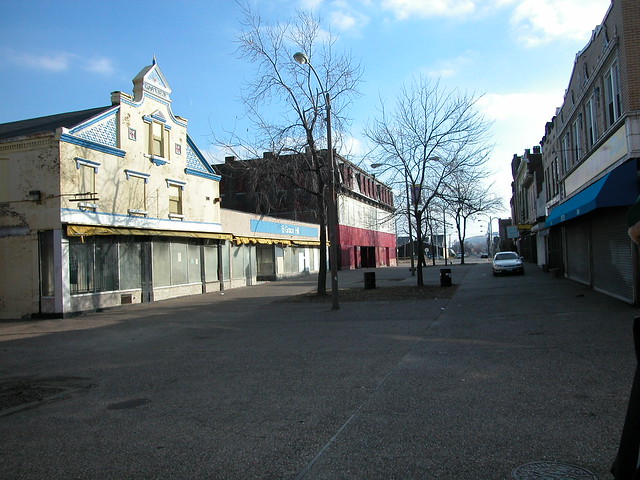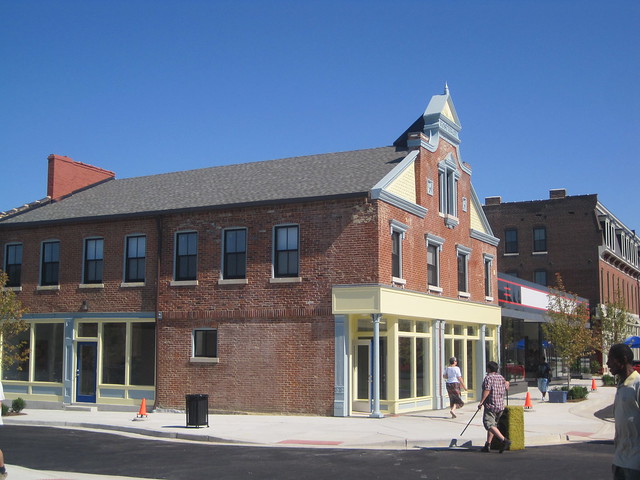by Michael R. Allen

At long last, there has been some stabilization work underway the James Clemens, Jr. House. In the last two months, crews working for Northside Regeneration LLC have removed debris, removed all asbestos, lead and PCBs and undertaken some structural stabilization work. This project unfortunately timed with the year-end announcement that Northside Regeneration’s buyer could not close on purchasing the Missouri Housing Development Commission (MHDC)-issued tax-exempt bonds for the Clemens House. Those bonds were available through stimulus funding and could not carry over to 2011.
The James Clemens, Jr. House could remain at square one — except that the work done now advances it beyond its starting point nearly six years ago when Paul J. McKee Jr.’s Blairmont Associates LLC purchased the historic building. Now, McKee and his partner Robert Wood have invested money into the property, and the condition has started to improve. What comes next is uncertain, but McKee and Wood vow to pursue financing in 2011. Unfortunately that will mean waiting until September to re-apply for MHDC financing.

The most stunning part of the work done to date is the removal of the roof on the wing of the chapel wing, which was built by the Sisters of St. Joseph in 1896. Not only has most of the roof structure been removed, but also five bays of the wall itself above the first floor are now removed as well. Of course, since a collapse in May 2008, three bays had already collapsed.
The sight of the Clemens House lawn littered with parts of the massive trusses, laden with impressive historic hardware, sent this author looking for answers as to the methodology of the stabilization work. Lafser & Associates is the consulting firm working on historic preservation issues for Northside Regeneration. Fred Lafser, president of the company, described the work to this author recently.
“Large roof trusses, saturated with water and frozen, weighing 4 tons each, had fallen against the east wall, taking a portion of the roof and wall with them. In recent weeks, the pressure had caused a portion of the east wall on the second floor to separate 12 inches from the south (façade) wall,” said Lafser. “A number of other trusses were likely to fall in the next few weeks due to the expansion during the freezing and thawing cycles.”

According to Lafser, removal of the trusses safely was extremely difficult. The trusses has to be cut out from distances and staged slowly to prevent damage to the rest of the building. Unfortunately the removal of the trusses is the only planned work on the chapel until full financing is in place. The developers are committed to making emergency repairs, however.
Fred Lafser sent photographs that show the chapel work from the interior. The first photograph shows that the bowing of the western wall of the chapel is also advanced. Removal of the trusses will prevent sudden collapse. Still, part of the wall will have to be dismantled and rebuilt later.


Other work performed now included insertion of sistering structural members at weak columns and joists and complete board-up of openings. The photograph below shows that the rear (north) elevation of the chapel remains sound.

The eastern elevation of the dormitory wing has long had masonry issues. The dormitory wing itself is a hybrid building, with its original two-story western portion being the Clemens House’s servants wing. The top two floors and the eastern section were built as dormitory for the Sisters of St. Joseph in 1887, two years after they purchased the property for use as a convent. The dormitory originally had a two-story gallery porch on the east, set into the wall inside of massive segmental arched openings. These openings are now infilled with brick. The wall has some weak spots addressed by the stabilization work.

While the James Clemens, Jr. House is not fully stabilized after this recent work spree, it is definitely in a safer condition than it has been in over a decade. Northside Regeneration is now the first party to spend money on stabilizing the Clemens House since the Universal Vietnamese Buddhist Association abandoned their work in 2004 — a fact that few would have predicted back when talk of “Blairmont” first surfaced. Full rehabilitation also seemed a remote prospect then, but now it seems a logical next step.














 The west side of 14th Street between Montgomery and Benton Streets, December 2004 (top) and July 2010 (bottom).
The west side of 14th Street between Montgomery and Benton Streets, December 2004 (top) and July 2010 (bottom).
 The view down 14th Street south from St. Louis Avenue in December 2004 (top) and July 2010 (bottom).
The view down 14th Street south from St. Louis Avenue in December 2004 (top) and July 2010 (bottom).
